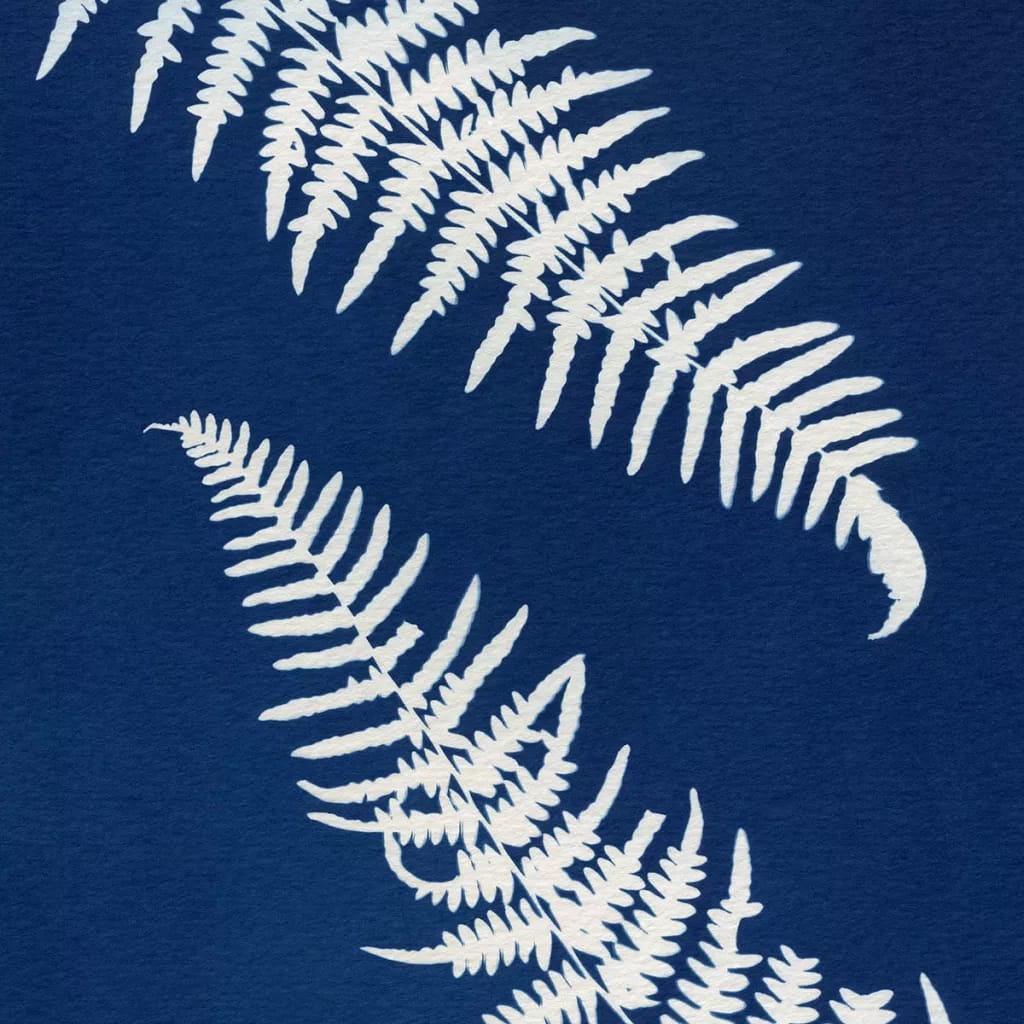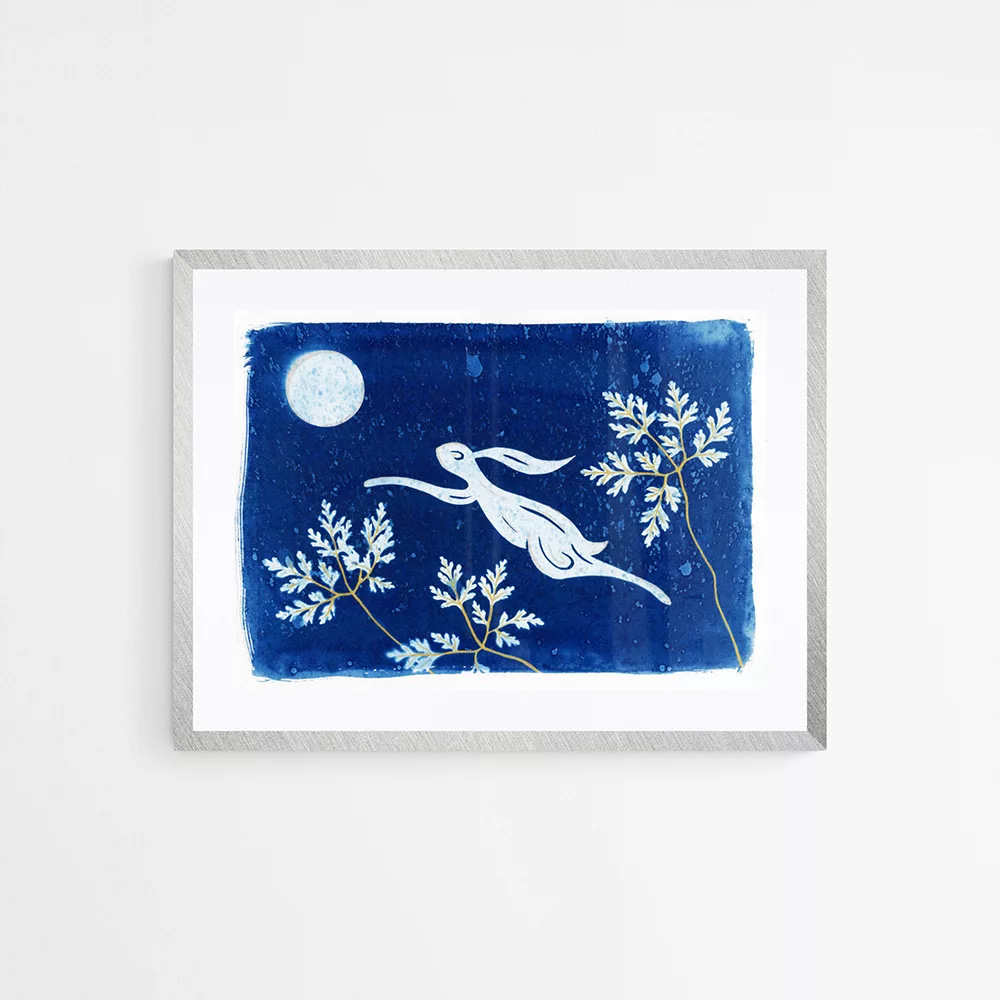What is a Cyanotype
So what is ‘Cyanotype Art’ and the ‘Cyanotype Process’? Well simply put it’s original art created using the cyanotype photographic process. It is generally considered to fall under the banner of ‘Alternative Photography‘ and is arguably the most easily recognisable due to its iconic Prussian blue and white colours.
With the invention of digital photography, many proclaimed that film and analogue photography were dead. Yet those who have experienced the magic of a darkroom know that will never be true. Especially when it comes to the more art-based ways of using the processes, essentially photographic art. ‘Historical’ photography creates unique images that digital simply can’t duplicate. Additionally, their purely physical nature creates a very different personal relationship between the photographer or artist and the photographic images produced.

“There is something magical about watching an image physically manifest. I get a real buzz from it everytime”
Mara Louvain


How is a Cyanotype Made?
Well, a Cyanotype Print is a photographic image which traces its origins back to the 19th Century. The prints are created by coating the paper by hand with light-sensitive chemicals before exposing the treated paper to UV light, either from a lamp or using sunlight. The print can then be ‘developed’ in water which is when the beautiful blue colour appears. As a result, the prints are all different and original.
A Little Bit of History
The process was developed by Sir John Herschel (of astronomy fame) in 1842 and was used to create the first book to be illustrated using photographic images in 1843 by Anna Atkins (you can read more about Anna in my article Inspired by Anna Atkins – Cyanotypes, Photography and a Female Trail Blazer). It tended to be dismissed by ‘serious’ photographers in Victorian England because of the blue and white colouring. The argument was that a blue-and-white image is ridiculous because we don’t see the world in blue and white. It’s ironic then that those same ‘serious’ photographers had no problem with sepia-coloured images. Considering we don’t see the world in brown and white either.
While those ‘serious photographers’ may have turned their back on the process it has gained a dedicated following. Enjoying something of a renaissance in recent years with artists exploring ways to extend the process in new and exciting ways.
If you’d like to see the process in action then why not check out this video on Art that Whispers.
